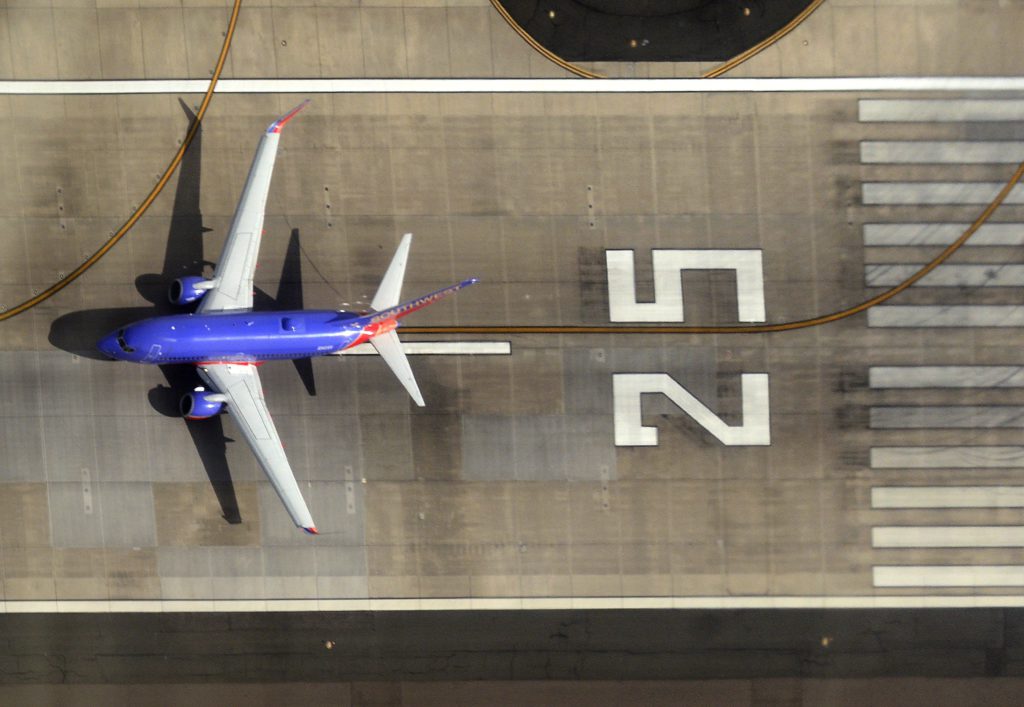A FedEx Corp. wide-body cargo jet came within 100 feet of colliding with a Southwest Airlines Co. plane early Feb. 4 in Austin, Texas, and the two planes remained in close proximity for at least 30 seconds, according to accident investigators.
(Bloomberg) — A FedEx Corp. wide-body cargo jet came within 100 feet of colliding with a Southwest Airlines Co. plane early Feb. 4 in Austin, Texas, and the two planes remained in close proximity for at least 30 seconds, according to accident investigators.
The FedEx Boeing Co. 767-300 had been cleared to land on the same Austin-Bergstrom International Airport runway where the Southwest 737-700 was taking off in heavy fog. The FedEx plane came perilously close as the pilot aborted its touchdown and began climbing above the smaller plane, said Jennifer Homendy, chairwoman of the US National Transportation Safety Board.
“We believe it was less than 100 feet, but don’t have the exact number yet,” Homendy said in an interview.
The newly released NTSB details, which parallel information from a Bloomberg review of Flightradar24 tracking data, offer new insight into the seriousness of Saturday’s incident, which didn’t result in any injuries.
“It was extremely poor visibility and in near dark conditions,” Homendy said.
At one point, the two planes were separated by less than 25 feet laterally as the FedEx jet flew above the Southwest aircraft, which had reached a speed of about 150 miles (241 kilometers) an hour while accelerating for takeoff, according to the data. Seconds later, as the Southwest plane lifted off, the two were less than 50 feet apart laterally and about 625 feet apart in height.
“No question the airplanes were much too close,” said John Cox, a former airline pilot who is now a safety consultant. “It’s a very rare event to have these airliners so close.”
Second Incident
The NTSB is investigating the incident, which occurred at about 6:40 a.m. local time. It’s the second serious runway near-collision in recent weeks.
On Jan. 13, an American Airlines Group Inc. widebody jet rolled across a runway at John F. Kennedy International Airport in New York as a Delta Air Lines Inc. plane accelerated for takeoff.
The Federal Aviation Administration is also reviewing the two incidents.
As occurred in the earlier incident in New York, the NTSB believes that cockpit sound recorders on both planes in Austin were overwritten and won’t be of use to investigators, Homendy said. So-called cockpit voice recorders collect the last two hours of sound on the flight deck.
Cox praised the FedEx pilots for aborting their landing seconds before touchdown, apparently realizing the other jet was on the runway.
As the FedEx jet neared the runway, one of the pilots said on the air-traffic radio frequency, “Southwest abort,” Homendy said. But the pilots on the passenger plane continued. A recording of the air-traffic radio calls was posted on the LiveATC.net website.
‘On the Go’
“FedEx is on the go,” the cargo pilot radioed the tower moments later, using aviation terminology for calling off a landing.
A controller earlier had cleared the Southwest jet to take off and warned the pilots of both planes there was nearby traffic. It wasn’t clear why both planes were directed toward the runway at the same time.
The two planes remained within 550 feet of each other laterally for 33 seconds, according to the Flightradar24 data, as the FedEx jet climbed slightly faster along the runway. Typically, planes headed for the same runway would be separated by about 3.5 miles laterally or 1,000 feet vertically.
Southwest Flight 708 arrived in Cancun about two hours later, according to Flightradar24. The FedEx jet circled the airport and landed in Austin about 12 minutes after the incident.
See also: Southwest’s scheduling targeted by regulators after meltdown
A Southwest spokesman said the airline didn’t have additional information to share on the incident. There were 123 passengers and five crew members aboard, according to the company.
A FedEx spokesman referred questions to the FAA and NTSB.
–With assistance from Thomas Black.
(Updates with NTSB comments starting in first paragraph.)
More stories like this are available on bloomberg.com
©2023 Bloomberg L.P.










